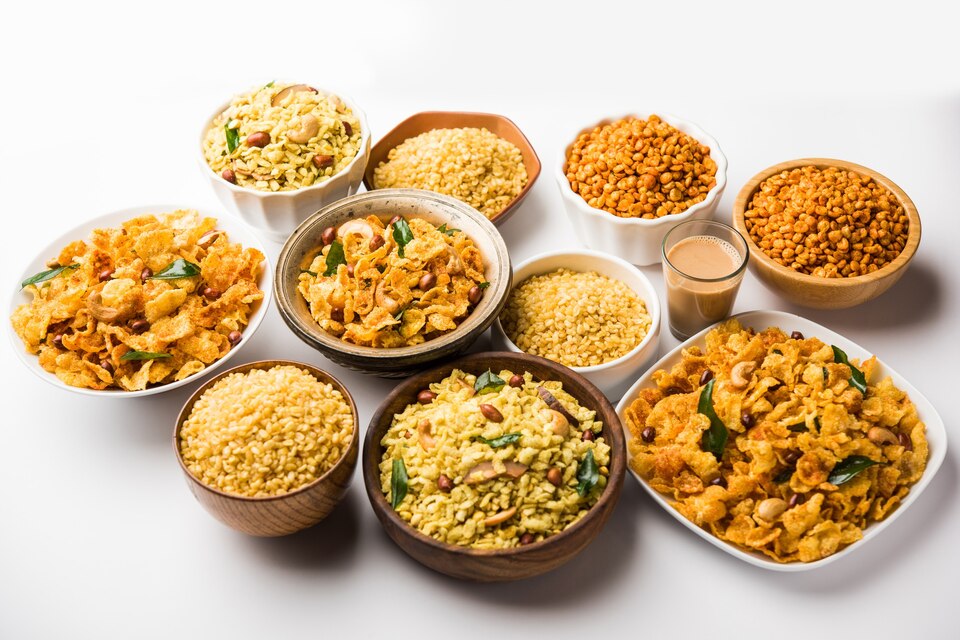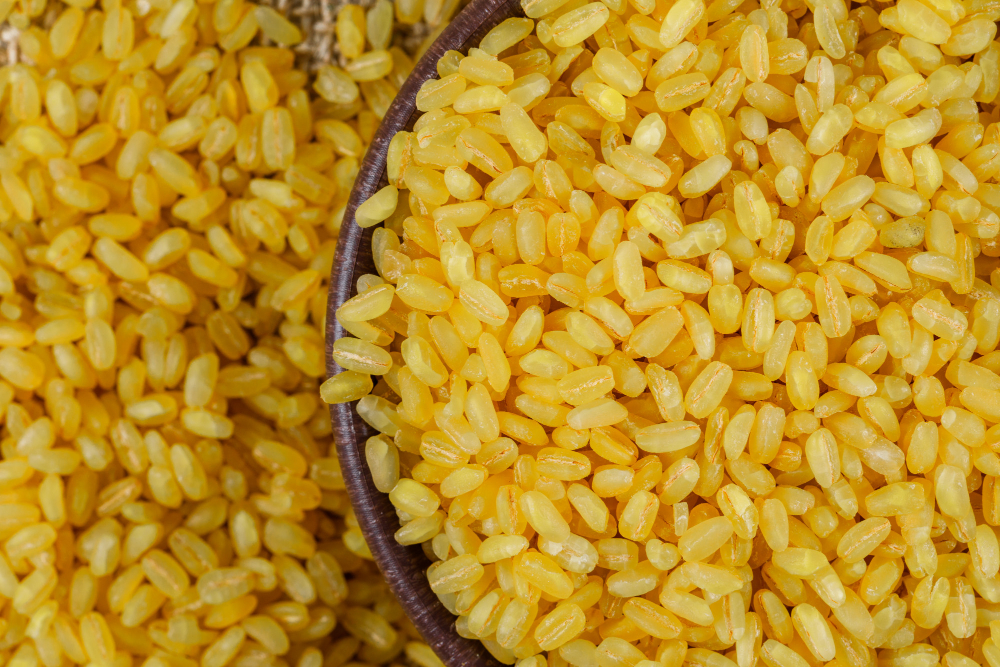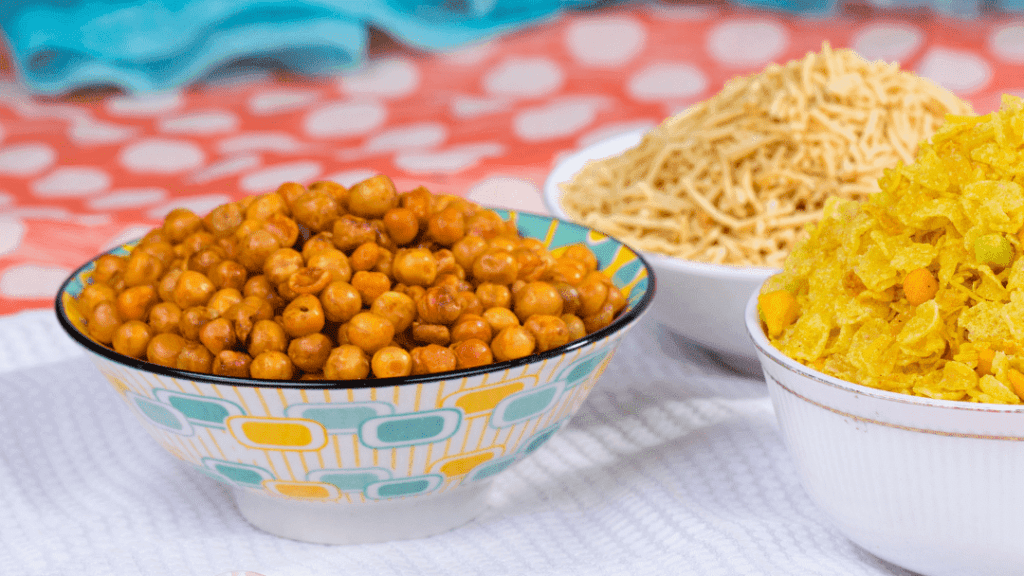Cultural Significance and Enjoyment of India Namkeen

Namkeen, a quintessential Indian snack, holds immense cultural significance in the country. Known for their savory and crunchy flavors, Indian namkeens are enjoyed across various regions of India. Each type of namkeen has its unique taste and preparation method, making it a beloved snack in different parts of the country.
Revolution of Namkeen
Namkeen is more than just a tasty treat; it has become an inherent part of festivals, celebrations, and social gatherings. During festivals like Diwali, namkeen is prepared and shared with friends and family as a symbol of joy and togetherness. It adds a touch of flavor and crunch to festive feasts and is often exchanged as gifts during special occasions.
In addition to festivals, namkeen plays a vital role in everyday life. It is commonly served as a tea-time snack, providing a savory accompaniment to a cup of chai. It is also a popular option for quick bites between meals or while traveling. Namkeen has become an essential part of Indian street food, where vendors offer a wide range of crispy and savory snacks to satisfy the taste buds of passersby.
Namkeen is not limited to a specific region but has spread its influence across the country. Each region has its unique namkeen specialties, representing the flavors and culinary traditions of that area. For example, Rajasthan is famous for its spicy and crispy bhujia, while Gujarat offers a variety of crunchy and tangy namkeens like fafda and gathiya.
Namkeen has evolved over time, adapting to changing tastes and preferences. From traditional recipes passed down through generations to innovative flavors and combinations, namkeen continues to captivate the taste buds of millions. It has become a symbol of the diverse culinary landscape of India, showcasing the rich cultural heritage and culinary expertise of different communities.
Different Types of Namkeen and How They Are Enjoyed in Different Parts of India
- Aaloo Bhujia: Aaloo Bhujia is a crispy and spicy potato-based namkeen. It is widely consumed in North India, especially in states like Punjab and Uttar Pradesh. Aaloo Bhujia is known for its distinct taste and is often served as an accompaniment with tea or as a topping on chaat items. The traditional method of making crispy aloo bhujia namkeen involves deep-frying potato and gram flour strands and then seasoning them with a blend of spices.
- Namkeen Bhujia: Bhujia is a popular namkeen that originated in the state of Rajasthan. It is made by deep-frying gram flour and adding various spices and seasonings. Bhujia is known for its crispy texture and savory taste. It is a staple snack in Rajasthan and is often enjoyed with tea or as an ingredient in chaat items like sev puri and bhel puri. Bhujia is available in various forms, including plain Bhujia, spicy Bhujia, and even flavored variants like tomato Bhujia.
- Nut Cracker: Nut Cracker is a delightful mix of crunchy nuts, sev, and spices. It is a popular namkeen enjoyed in Maharashtra and Gujarat. The blend of roasted peanuts, cashews, and other nuts with crispy sev creates a delicious and satisfying snack. Nut Cracker is often enjoyed during festivals and celebrations and is also a favorite munching option during family gatherings and movie nights.
- Moong Dal: Moong Dal namkeen is made from fried and seasoned moong lentils. It is a widely consumed snack in different parts of India, including North India, Gujarat, and Maharashtra. Fried Moong Dal namkeen is known for its crunchy texture and savory taste. It is a staple during festivals like Diwali and is also enjoyed as a tea-time snack. The combination of spices and fried moong lentils creates a perfect balance of flavors.
- Salted Peanut: Salted peanuts are a simple yet popular namkeen snack enjoyed all over India. They are made by roasting peanuts with a sprinkle of salt. Salted peanuts are a favorite companion during movie nights, cricket matches, and social gatherings. They are often served in small paper cones and provide a satisfying crunch and a burst of flavor. Salted peanuts are enjoyed by people of all ages and are a common sight at street food stalls and markets.
- Navrattran Mixture: Navrattran Mixture is a special namkeen consumed during Navratri, a nine-night festival dedicated to the Hindu goddess Durga. This namkeen is a mix of various ingredients like sev, peanuts, cashews, raisins, and spices. It is a fasting snack that is prepared without the use of onion and garlic, as these ingredients are avoided during Navratri. Navrattran Mixture is enjoyed as a prasad (offering) during religious ceremonies and is also relished by fasting individuals.
Conclusion:
Namkeen snacks hold a special place in Indian cuisine and culture. They are not just snacks but a reflection of the diverse flavors and culinary traditions of different regions in India. So, next time you savor a packet of namkeen, remember the rich cultural heritage it represents and enjoy the flavors that make India’s culinary landscape so vibrant.


